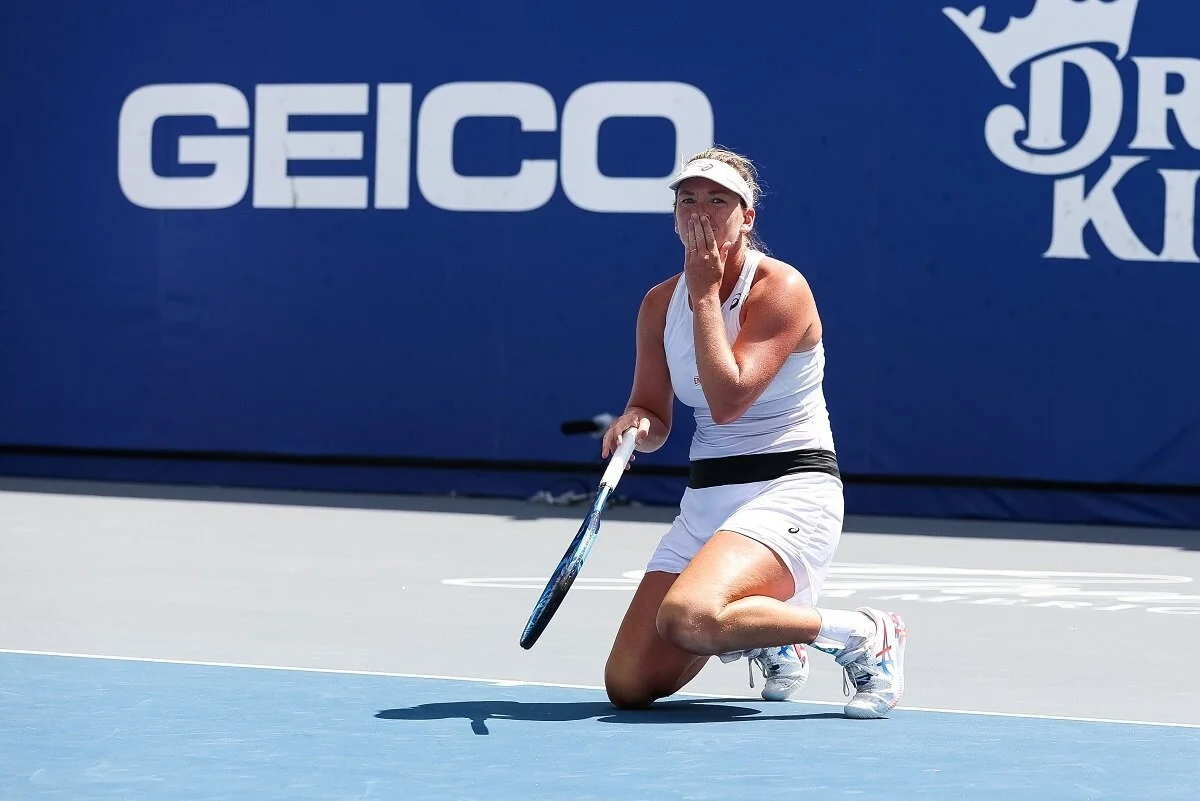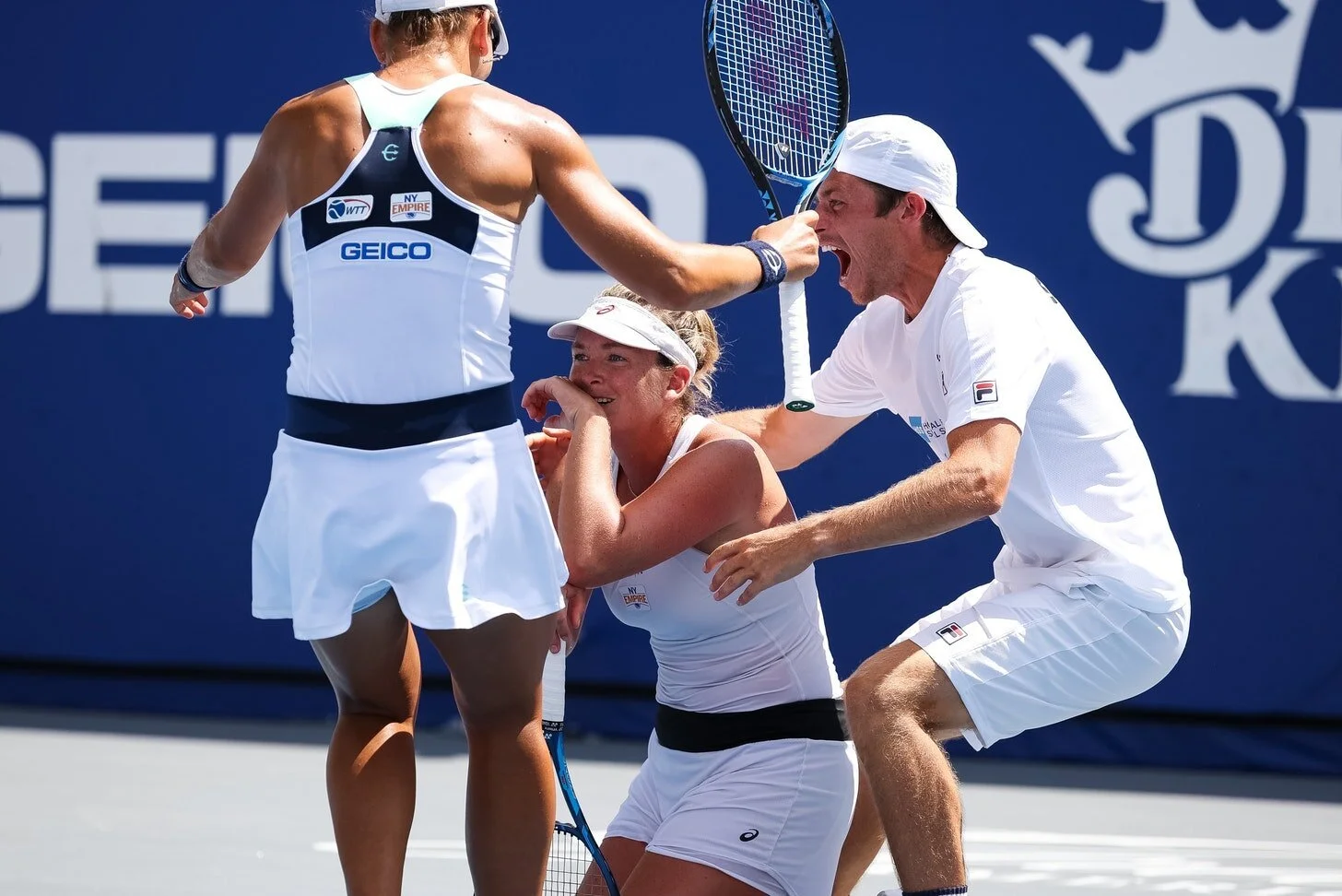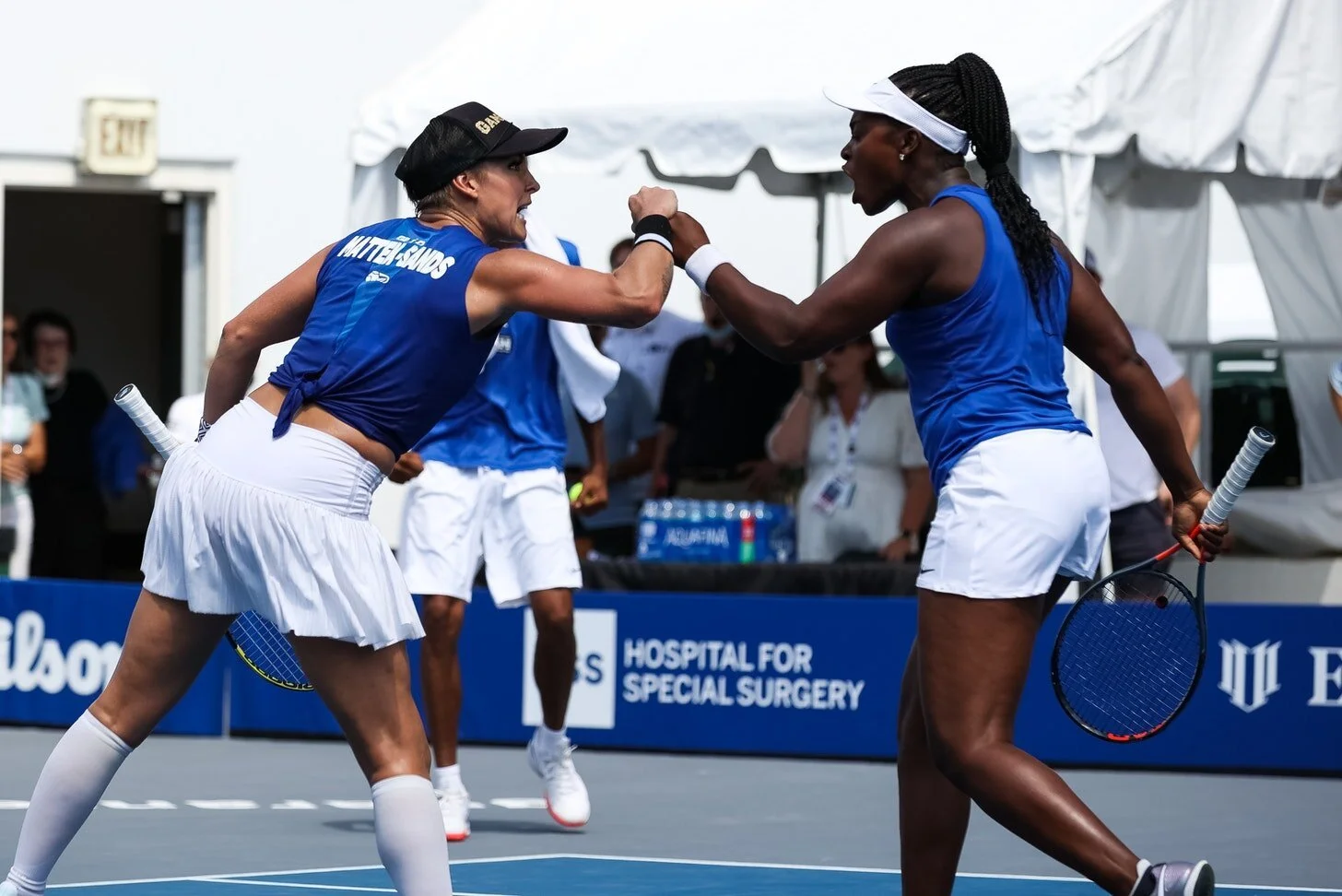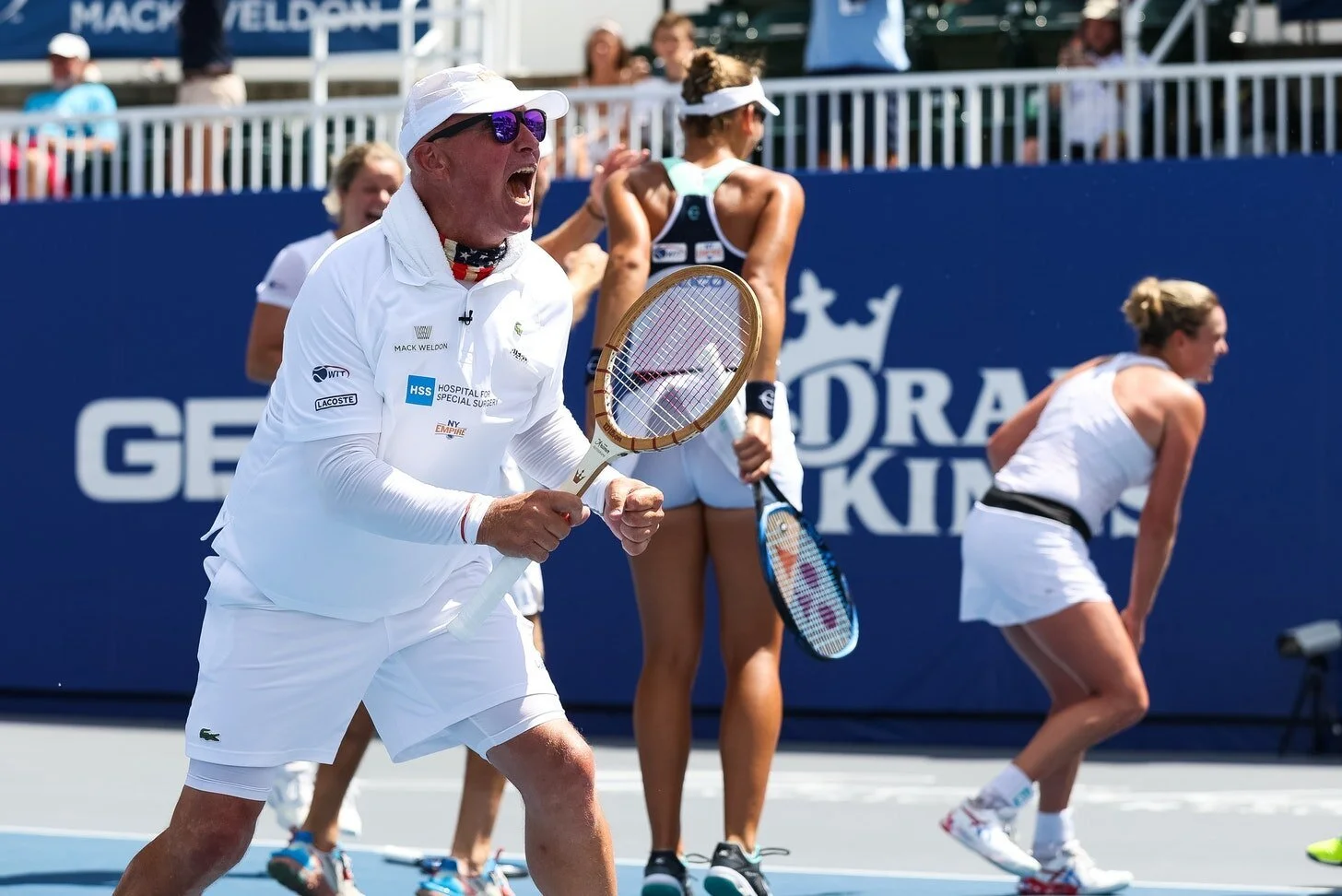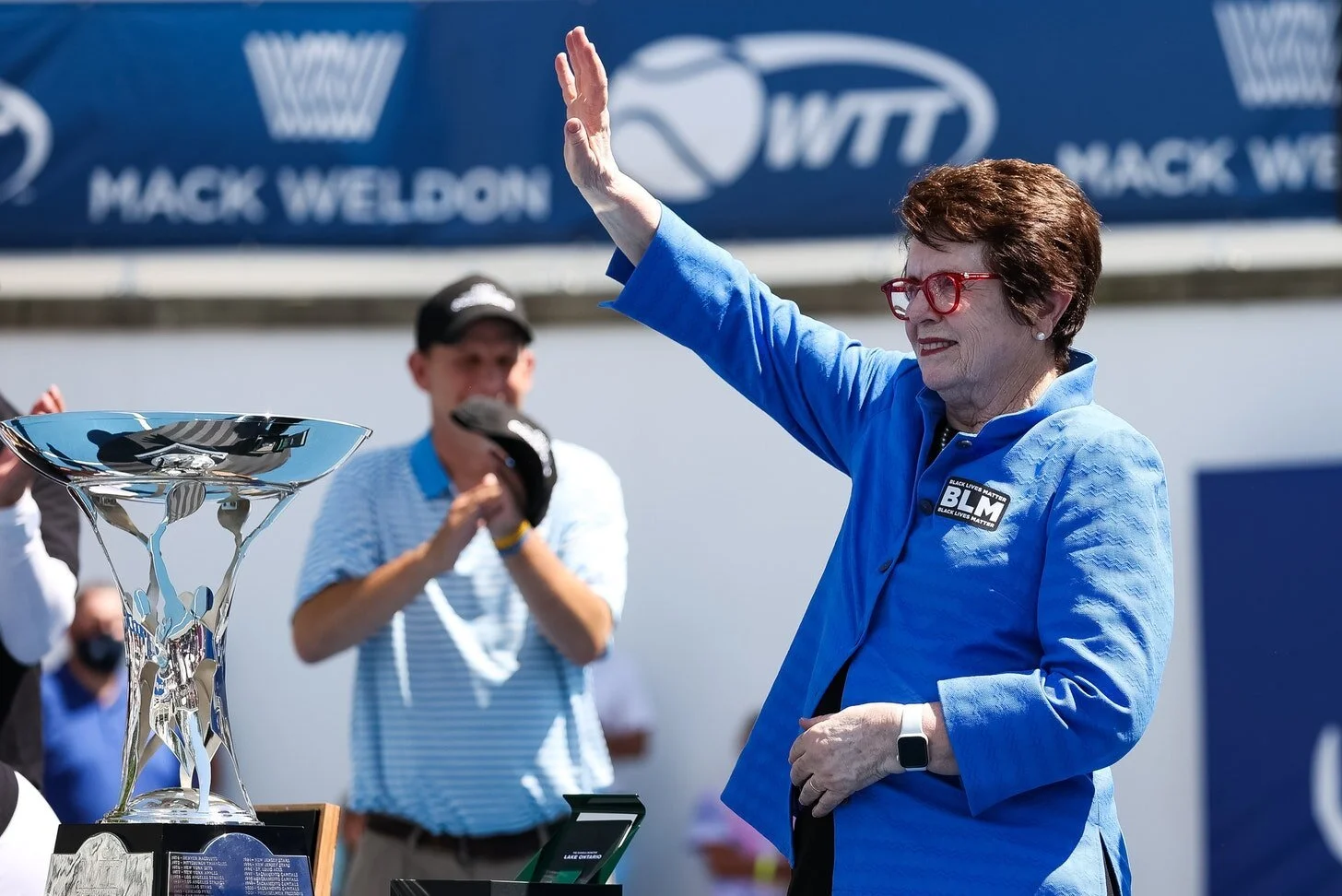DOCUMENTARIANS HAVE MASTERED THE ART OF THE TENNIS DOC; COMEDIANS HAVE FOUND EVERY WAY TO SPOOF THEM
Jason Momoa plays Ronnie Dunster in a Saturday Night Live send-up of Battle of the Sexes.
Billed as an intimate look at a number of underdog tennis stars, Netflix’s Break Point, released in 2022, was supposed to be the penultimate documentary on a crowded court — the extra-duty ball with the heavy topspin, if you will. But among others, Break Point had to contend with The Gods of Tennis from the BBC, McEnroe from Showtime, Citizen Ashe from HBO/Max and even the man of Adidas’ “more than just a shoe” fame, Who Is Stan Smith, which never quite found a home. But what about the tennis mockumentary? Although they don’t outnumber the number of appearances Billie Jean King makes in most any documentary about tennis or women’s sports, the recent Saturday Night Live short UNTOLD: Battle of the Sexes — a lampoon of 2017 movie, Battle of the Sexes — reminds us all that nothing beats a solid spoof.
UNTOLD: Battle of the Sexes (Saturday Night Live, USA, 2023): Before Billie Jean King defeated Bobby Riggs, Charna Lee Diamond (played by regular player Sarah Sherman) took on the largest male opponent in history, Ronnie Dunster (played by that week’s host, Jason Momoa.) “There’d be no Billie without Charna,” one sports journalist speculates, in the vein of Netflix’s Untold series. But instead of Charna defeating the Goliath Dunster, Dunster serves and hits a tennis ball straight through Diamond. Yet, in the vein of the 1960s “we shall overcome,” Diamond continues playing with a hole in her middle. Sherman, known as Sarah Squirm in her improv days, doesn’t necessarily hold back, but the short reminds us that maybe some men are bigger than Bobby Riggs.
Tom Hanks plays an one-armed tennis player who gets dissed for a three-armed competitor in the 2013 Saturday Night Live sketch "Tennis Arms."
Tennis Arms (Saturday Night Live, USA, 2013): When it comes to tennis, snob Richard (Tom Hanks) is getting dumped by his doubles partner, Douglas (Will Forte) when he loses his dominant playing arm. Douglas tries to chalk it up to a “difference of opinion tennis-wise” in breaking the news before the annual tournament. But really, he has chosen three-arm Skip Prosser (Chris Parnell). Richard has a contingency plan at the ready, by bringing out seven-arm Toby Slaven (Bill Hader).
Kit Harrington and Andy Samberg recreate the longest match in the history of tennis in this HBO send-up.
7 Days in Hell (HBO, USA, 2015): Disguised as one of the ever-earnest HBO sports documentaries, this a fictional account of the world’s longest tennis match, based on the actual world’s longest tennis match, which took place between John Isner and Nicholas Mahut and lasted for 11 hours and 5 minutes over three days at the 2010 Wimbledon. Except this time, former SNL player Andy Samberg is Aaron Williams, the Andre Agassi-like adopted brother of Serena and Venus, taking on Charles Poole (Kit Harrington), an over-polite British child prodigy who says “undou-btably” in response to ever question and can never please his mother. In typical Samberg style, Seven Days can go over the top, although gains every laugh for which it plays.
Jeremy Sisto wrote and directed this comedy about a derelict tennis pro who teams with his straight-laced brother to return to the protour in Break Point.
Break Point (Amazon Prime, 2015): Volatile tennis pro Jimmy (Jeremy Sisto) wants to make one last run ay a major title. There is just one problem: no one will play with him. He drinks too much; he curses; and he has alienated just about everyone else on tour. Jimmy has one last resort however, his estranged brother and former doubles partner Darren (David Walton), whom he had abandoned years before for a higher-ranking player. Semi-supported by their tennis pro dad, J.K. Simmons, the brothers probably simulate actual tennis family dynamics better than any other tennis family. Look for cameos from the Bryan brothers and other pros.



























































































